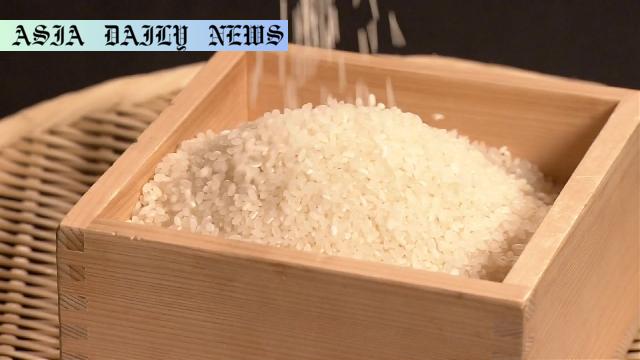rice prices: Agriculture minister’s plan to lower rice costs aims at affordable access for consumers amid soaring food prices.
Japan’s agriculture minister proposes reducing rice prices to assist consumers facing high costs.
Aims to cut the current rice price in half using public stockpile releases.
Farmers cautiously welcome the plan but raise concerns about long-term implications.

Introduction: Addressing the Soaring Cost of Rice
In a bold response to rising food costs, Japan’s agriculture minister, Koizumi Shinjiro, has proposed a transformative plan to reduce rice prices drastically. Visiting Sapporo in Hokkaido, Japan’s agricultural hub, Koizumi outlined his strategy to offer consumers relief while addressing industry concerns. This move comes amidst widespread discontent over skyrocketing food prices, with rice being a staple in nearly all Japanese households. Under this initiative, the ministry plans to release substantial volumes of public stockpiles at significantly lower prices than currently available in supermarkets.
The Proposal in Depth
Koizumi’s approach focuses on utilizing the government’s rice stockpile to alter affordability dramatically. The plan includes releasing an initial 300,000 tons through non-bid sales contracts. This stock will be available without buyback conditions and will see the government absorbing transportation costs to make the price competitive. The ultimate goal? To bring a five-kilogram bag of rice down to 2,000 yen (approximately 14 USD). This amount is less than half of the current market price seen in supermarkets. Koizumi has further emphasized that the program would not impose a cap on the amount released as long as there is sufficient demand, paving the way for comprehensive support at a consumer level.
Mixed Reactions from Farmers and Producers
While the move has been welcomed for its short-term benefits, it has sparked concerns among the farming community. A farmer at the briefing shared optimism about improving accessibility for consumers but expressed reservations about setting low prices as a new standard. Farmers have long advocated for consistent returns to sustain their livelihoods. Koizumi later acknowledged the delicate balance required, noting that while high prices could benefit agricultural producers, prices deemed excessively high would need correction to protect consumers.
Long-Term Implications of Pricing Policies
This sharp intervention raises questions about its long-term impact on Japan’s agricultural market. Reducing prices to such an extent could disrupt supply chains, especially for producers accustomed to higher profit margins. Moreover, floodgates opened by this measure could complicate future debates around fair market pricing. However, Koizumi stressed that this initiative aligns with the government’s vision to prioritize citizens’ immediate needs over temporary market turbulence.
Next Steps and Industry Guidelines
The agriculture ministry has planned a detailed briefing session on Monday to address questions about non-bid contracts and ensure clear communication with stakeholders. This forum will provide a platform for rice producers, wholesalers, and retailers to review and voice their concerns, shed light on its implementation strategy, and seek assurance regarding long-term sustainability. By anchoring cooperative efforts, the government aims to win the collaboration required to make this policy effective without disrupting existing agricultural standards severely.
Conclusion: A Step Worth Applause?
The proposed plan to cut rice prices significantly represents an ambitious policy designed to alleviate financial strain on citizens. While consumers stand to gain immediate relief, stakeholders from the agricultural sector will be watching closely to track the program’s progress. For now, Koizumi’s initiative marks a bold attempt to bridge the affordability gap for a commodity ingrained in the everyday lives of the Japanese population.



Commentary
Balancing Consumer Relief with Agricultural Stability
Koizumi Shinjiro’s proposal to slash rice prices by utilizing public stockpiles reflects a commendable focus on addressing one of Japan’s most pressing economic issues: soaring food costs. For many families, rice forms the backbone of their daily diet, making it an essential commodity that greatly influences household budgets. Thus, prioritizing price reduction demonstrates a thoughtful and compassionate governance approach, especially during challenging times. However, bold policies like this often come with their own set of challenges that require careful consideration.
Short-Term Benefits versus Long-Term Concerns
In the immediate sense, this plan will undoubtedly provide essential relief to millions of Japanese households. It symbolizes a government taking active steps to combat inflation-driven hardships for ordinary citizens. However, looking at the broader picture, we must ask how this will impact farmers in the long term. Selling rice at such a competitive, low price might compromise profitability for producers, which in turn could discourage new entrants into farming—a sector already experiencing declining numbers due to aging demographics.
The Need for Stakeholder Collaboration
What stands out from Koizumi’s initiative is its openness to not setting rigid caps on stockpile releases and removing transportation cost burdens. These decisions reflect an adaptable and holistic approach. However, to ensure its sustainability and the confidence of farmers, wholesalers, and retailers, the government must involve stakeholders at every level. A transparent dialogue will be crucial in ironing out potential inefficiencies or grievances resulting from the policy.
Looking Forward: Striking a Delicate Balance
In conclusion, Koizumi’s proposed initiative could mark a turning point for Japan’s agricultural sector if implemented judiciously. Finding the right balance between reducing costs for consumers and sustaining fair returns for farmers will be the ultimate measure of its success. Policies as bold as this always demand time, patience, and collaboration for their enduring impact, and this initiative is likely no exception.